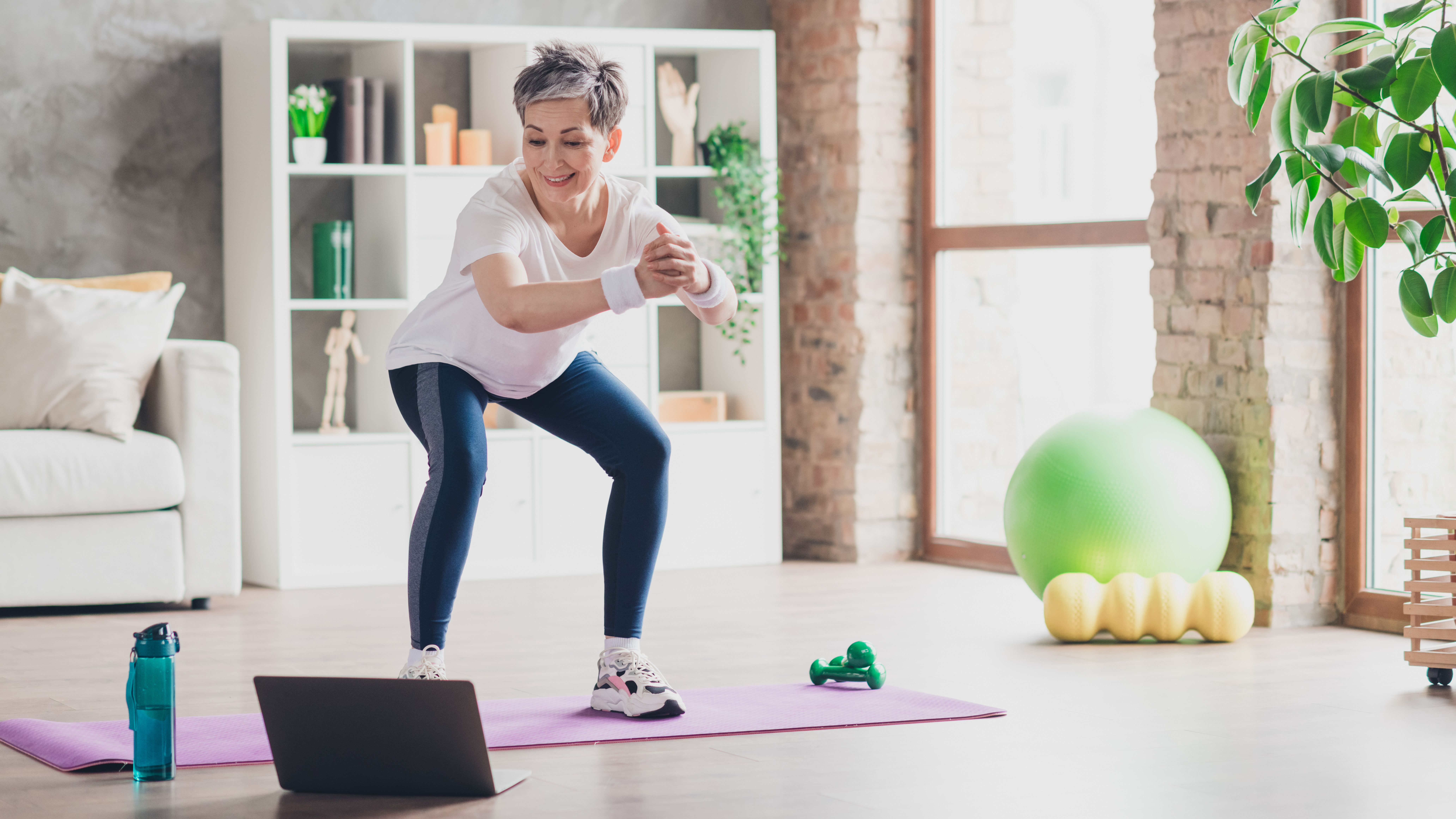A pelvic floor physical therapist says these are the three exercises everyone, including men, should be doing
You'll benefit from them even if you don't have symptoms

Pelvic floor issues can have a big impact on your quality of life, particularly if you're dealing with incontinence or experiencing pain.
In the US, over 25 million adult Americans experience temporary or chronic incontinence, according to the National Association for Continence, but there are exercises you can do to help.
"We should all be strengthening our pelvic floor in the same way that we should all be physically active," says pelvic floor physical therapist at Ten Health, Leanne O'Brien.
"You want to aim for prevention, as opposed to being reactive when the problem already exists," she says.
Given that menopausal and postmenopausal women are more prone to incontinence, O'Brien says that strengthening the pelvic floor is particularly important for women.
However, incontinence can still be an issue for men, especially later in life, so there are benefits to strengthening your pelvic floor whatever your sex.
How do you strengthen the pelvic floor?
There are specific ways to strengthen the floor, like the Kegel exercises that O'Brien has shared below, but it's also important to strengthen supporting muscles.
Start your week with achievable workout ideas, health tips and wellbeing advice in your inbox.
"The pelvic floor works with other muscles around the pelvis," O'Brien explains. "If you have weakness through the gluteal muscles or abdominal muscles, it means that the pelvic floor has to work harder."
"I've had patients who have had surgery, who have been told they have to do pelvic floor exercises. They have an incredibly strong pelvic floor, but actually they've not done any strength training," she says.
This means that even though their pelvic floor is strong, it's having to work extremely hard to support the glutes and abs.
But if you do glute and core exercises correctly, you actually recruit the pelvic floor muscles.
"If you're engaging the abdominal muscles and you're doing an abdominal or a core-based exercise, you'll also be working on the pelvic floor," confirms O'Brien.
She recommends strength training twice a week or three times a week if you have symptoms.
Three moves to strengthen the pelvic floor
O'Brien has shared three exercises that target the pelvic floor, glutes and core, all of which will help you strengthen the pelvic floor.
"You should never be symptomatic during the exercise, so you shouldn't have any leaking or any urgency when you're doing the exercise, because that suggests you're over challenging the pelvic floor," O'Brien says.
1. Squeeze and lift
Pelvic floor squeezes are a great way to actively strengthen the pelvic floor, as long as you're doing them properly.
"Imagine that you're stopping yourself from emptying your bowel or stopping yourself from farting," O'Brien advises. "Squeeze the rectum and try to lift the rectum internally."
Squeeze for 10 seconds, then release for five seconds 10 times in total.
For more tips on how to effectively do pelvic floor squeezes, read our full guide to pelvic floor kegels.
2. Squat
"Squats activate the glute muscles and lengthen the pelvic floor," O'Brien. says. "They're a simple way to get the glutes, pelvic floor and the abdominal muscles working."
- Stand with your feet shoulder width apart, with the toes facing forwards or slightly turned out.
- Squat down, keeping the chest high and letting the hips drop low. Aim to get your thighs parallel or lower to the ground.
- Drive through the feet to push up back to standing.
- Complete eight to 12 reps.
Once you can confidently complete 12 reps, add a weight like a dumbbell or a kettlebell, and hold it at your chest.
3. Tabletop toe tap
"Exercises that strengthen the lower abdominal muscles can be good for the pelvic floor," O'Brien says.
"When the pelvic floor switches on, transversus abdominis will switch on, and when transversus abdominis switches on, the pelvic floor will switch on."
- Lie on your back, bend your knees to 90° and raise your legs, so your shins are parallel to the floor.
- Tap one toe to the floor, then bring it back to the starting position. Then tap the other toe to the floor and bring it back.
- Repeat this eight to 15 times, making sure you're challenging yourself until your core is too tired to continue without compromising your form.
Alice Porter is a freelance journalist covering lifestyle topics including health, fitness and wellness. She is particularly interested in women's health, strength training and fitness trends and writes for publications including Stylist Magazine, Refinery29, The Independent and Glamour Magazine. Like many other people, Alice's personal interest in combining HIIT training with strength work quickly turned into a CrossFit obsession and she trains at a box in south London. When she's not throwing weights around or attempting handstand push-ups, you can probably find her on long walks in nature, buried in a book or hopping on a flight to just about anywhere it will take her.
You must confirm your public display name before commenting
Please logout and then login again, you will then be prompted to enter your display name.

